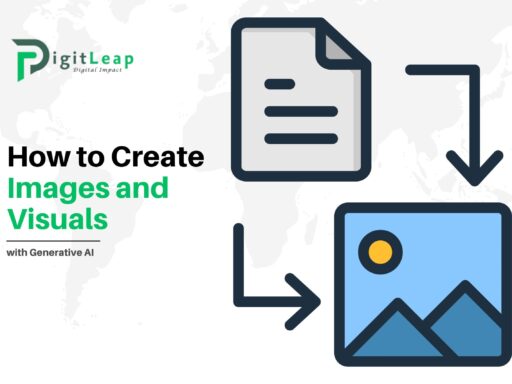Top 50+ Web Development Interview Questions and Answers for 2025
As the digital landscape continues to evolve at a rapid pace, web development remains a cornerstone of building robust, user-friendly online experiences. Whether you’re a seasoned developer or just starting out, being well-prepared for technical interviews is essential. In 2025, interviewers are looking for a blend of strong technical knowledge, familiarity with modern tools and frameworks, and the ability to solve real-world problems. Here’s a comprehensive list of over 50 web development interview questions along with sample answers to help you succeed.
General Web Development
- What are the key differences between HTML, CSS, and JavaScript?
Answer:
HTML is the markup language used to structure web content, CSS is used for styling and layout, and JavaScript is a programming language that adds interactivity and dynamic behavior to web pages. - What is Responsive Web Design (RWD) and why is it important?
Answer:
Responsive Web Design is the approach of designing websites that adapt to different screen sizes and devices. It ensures a consistent user experience, improves accessibility, and is crucial for SEO and mobile usability. - Can you explain the concept of the Document Object Model (DOM)?
Answer:
The DOM is a programming interface for HTML and XML documents. It represents the page so that programs can change the document structure, style, and content. It allows JavaScript to dynamically access and update content, structure, and styles. - What are semantic HTML elements and why are they important?
Answer:
Semantic HTML elements (like<header>,<footer>,<article>, and<section>) clearly describe their meaning in a human- and machine-readable way. They improve accessibility, SEO, and make the code more maintainable. - What is the purpose of CSS preprocessors like SASS or LESS?
Answer:
CSS preprocessors allow developers to write more efficient, modular, and reusable code using variables, nesting, mixins, and functions. They compile into standard CSS, simplifying complex style sheets and improving maintainability. - How does JavaScript differ from other programming languages?
Answer:
JavaScript is primarily used for client-side scripting, is dynamically typed, and supports event-driven, functional, and object-oriented programming styles. It runs in the browser and has become a core technology for modern web applications. - What are Web APIs, and can you give an example?
Answer:
Web APIs are interfaces provided by browsers that allow developers to interact with various functionalities (such as geolocation, local storage, or canvas drawing). For example, the Fetch API is used to make HTTP requests. - What is AJAX and how does it work?
Answer:
AJAX (Asynchronous JavaScript and XML) enables web pages to update asynchronously by exchanging data with a server behind the scenes. This means parts of a web page can be updated without reloading the entire page. - Describe the concept of Single Page Applications (SPAs).
Answer:
SPAs load a single HTML page and dynamically update content as the user interacts with the app, providing a more seamless and responsive experience. Frameworks like React, Angular, and Vue.js are commonly used to build SPAs. - What are Progressive Web Apps (PWAs) and their benefits?
Answer:
PWAs are web applications that offer an app-like experience using modern web capabilities. Benefits include offline functionality, faster load times, and improved user engagement, along with lower development costs compared to native apps.
Front-End Frameworks and Libraries
- What is React, and why is it popular?
Answer:
React is a JavaScript library for building user interfaces, especially for single-page applications. Its popularity stems from its component-based architecture, virtual DOM for efficient updates, and strong community support. - How does Angular differ from React?
Answer:
Angular is a full-fledged framework with built-in tools for routing, state management, and form handling, while React is a library focused solely on the view layer. Angular uses TypeScript by default, and its MVC architecture contrasts with React’s component-based approach. - What are Vue.js and its key features?
Answer:
Vue.js is a progressive JavaScript framework for building user interfaces. It combines the best features of Angular and React with a gentle learning curve, reactive data binding, and component-based architecture, making it ideal for both small projects and large-scale applications. - What is JSX and how is it used in React?
Answer:
JSX is a syntax extension for JavaScript that allows developers to write HTML-like code within React components. It makes the code more readable and easier to write by combining HTML structures with JavaScript logic. - Can you explain what a component is in front-end development?
Answer:
A component is a self-contained, reusable piece of code that encapsulates HTML, CSS, and JavaScript. Components enable modular development, making it easier to manage and scale complex applications by breaking them down into smaller, independent units.
Back-End Development
- What is Node.js, and how does it differ from traditional server-side environments?
Answer:
Node.js is a JavaScript runtime built on Chrome’s V8 engine that allows developers to run JavaScript on the server side. It’s non-blocking, event-driven, and ideal for building scalable network applications, unlike traditional server environments that often use synchronous processing. - How do you manage packages in Node.js?
Answer:
Node.js uses package managers like npm (Node Package Manager) or Yarn to manage dependencies. These tools help install, update, and manage libraries and frameworks required for a project. - What is REST API, and why is it widely used?
Answer:
REST (Representational State Transfer) is an architectural style for designing networked applications. It uses standard HTTP methods (GET, POST, PUT, DELETE) and is widely used because it is stateless, scalable, and allows for easy communication between client and server. - Explain the concept of middleware in Express.js.
Answer:
Middleware in Express.js is a function that processes requests before they reach the final route handler. It can be used for logging, authentication, parsing request bodies, and handling errors, making it essential for building robust server-side applications. - What is GraphQL and how does it compare to REST?
Answer:
GraphQL is a query language for APIs that allows clients to request exactly the data they need, reducing over-fetching or under-fetching common in REST APIs. It offers more flexibility and efficiency for complex applications, though it can require a steeper learning curve and more robust server-side implementation.
Databases and Data Management
- What are the differences between SQL and NoSQL databases?
Answer:
SQL databases are relational, use structured query language, and are ideal for applications requiring complex queries and transactions. NoSQL databases are non-relational, more flexible with unstructured data, and excel in scalability and performance for large volumes of data. - Can you give an example of when you would use a NoSQL database?
Answer:
A NoSQL database, such as MongoDB, is ideal for applications with rapidly changing data structures or when dealing with big data and real-time web applications where scalability and flexible data models are crucial. - What is ORM and why is it useful in web development?
Answer:
Object-Relational Mapping (ORM) is a technique that allows developers to interact with a database using object-oriented programming languages instead of SQL. It simplifies data manipulation and enhances productivity by abstracting the database interactions. - How do you ensure data security in your applications?
Answer:
Ensuring data security involves implementing best practices such as encryption, regular security audits, secure coding practices, using prepared statements or parameterized queries to prevent SQL injection, and keeping software dependencies up to date.
Version Control and Collaboration
- What is Git, and why is it important for web development projects?
Answer:
Git is a distributed version control system that tracks changes in source code during development. It’s essential for collaboration, allowing multiple developers to work on the same project simultaneously, manage version history, and revert changes when necessary. - Can you explain what a pull request is and its role in code collaboration?
Answer:
A pull request is a method of submitting contributions to a project. It allows developers to review changes, discuss improvements, and merge code into the main branch once it meets the project’s standards, facilitating collaborative development and ensuring code quality. - What strategies do you use for managing code branches?
Answer:
I use strategies like Git Flow or trunk-based development to manage branches effectively. This involves creating separate branches for features, fixes, and releases, which helps maintain a clean main branch and facilitates easier code reviews and integration.
Performance and Optimization
- How do you optimize a website for speed?
Answer:
Website speed can be optimized through techniques such as compressing images, minifying CSS and JavaScript files, leveraging browser caching, using a content delivery network (CDN), and optimizing server response times. Regular performance testing is also key. - What is lazy loading and how does it improve performance?
Answer:
Lazy loading is a technique where content (images, videos, etc.) is loaded only when it is needed, such as when it comes into the viewport. This reduces initial page load time and saves bandwidth, leading to a faster and more efficient user experience. - What tools do you use for website performance testing?
Answer:
Common tools include Google PageSpeed Insights, Lighthouse, GTmetrix, and WebPageTest. These tools help identify performance bottlenecks and provide actionable recommendations for improvement.
Security and Compliance
- What are common security vulnerabilities in web applications?
Answer:
Common vulnerabilities include SQL injection, cross-site scripting (XSS), cross-site request forgery (CSRF), and insecure direct object references. Following best practices, such as input validation, proper error handling, and using secure authentication methods, can help mitigate these risks. - How do you ensure your web applications are secure?
Answer:
Ensuring security involves regular code reviews, vulnerability scanning, penetration testing, using HTTPS, keeping dependencies updated, and following secure coding guidelines. Implementing robust authentication and authorization mechanisms is also essential. - What is Content Security Policy (CSP) and why is it important?
Answer:
CSP is a security standard that helps prevent cross-site scripting and other code injection attacks by specifying which dynamic resources are allowed to load on a web page. It significantly enhances a website’s security by reducing the risk of malicious content execution.
Modern Development Practices
- What is serverless architecture and when would you use it?
Answer:
Serverless architecture allows developers to build and run applications without managing server infrastructure. It’s ideal for applications with unpredictable traffic patterns, where scalability and cost-efficiency are paramount. Services like AWS Lambda or Azure Functions are common examples. - How do you approach continuous integration and continuous deployment (CI/CD) in web development?
Answer:
CI/CD involves automating the process of code integration, testing, and deployment. Tools like Jenkins, GitHub Actions, or GitLab CI help streamline these processes, reduce errors, and ensure that new code is reliably integrated and deployed with minimal downtime. - What is Progressive Web App (PWA) development and its benefits?
Answer:
PWAs combine the best of web and mobile apps by offering offline capabilities, fast load times, and a responsive design. They enhance user experience and engagement while being cost-effective compared to native app development. - How do you manage state in modern web applications?
Answer:
State management in web applications can be handled through libraries and frameworks such as Redux (for React), Vuex (for Vue.js), or NgRx (for Angular). These tools help manage application state in a predictable and maintainable way, especially in large-scale applications. - What is microservices architecture and how does it benefit web development?
Answer:
Microservices architecture breaks down an application into small, independent services that communicate over APIs. This approach improves scalability, simplifies deployment, and allows teams to work on different services concurrently, leading to faster development cycles. - How do you ensure scalability in your web applications?
Answer:
Scalability is ensured by designing applications with modularity in mind, using scalable cloud services, optimizing database queries, and employing load balancing. Regular performance testing and monitoring help anticipate and address scalability issues before they impact users. - What are the benefits of using containerization tools like Docker?
Answer:
Docker enables developers to package applications and their dependencies into isolated containers that can run consistently across different environments. This leads to more efficient deployment, easier scaling, and a more reliable development-to-production workflow.
Soft Skills and Project Management
- How do you manage deadlines and ensure project milestones are met?
Answer:
Effective project management involves setting clear milestones, using agile methodologies, and leveraging tools like Jira or Trello for tracking progress. Regular team meetings and transparent communication are essential to ensure everyone is aligned and deadlines are met. - Describe a challenging project you’ve worked on and how you overcame obstacles.
Answer:
(Example Answer) “I once worked on a project that required migrating a legacy system to a modern framework under tight deadlines. We faced challenges with data migration and compatibility issues. By breaking the project into smaller sprints, continuously testing our solutions, and maintaining open communication with stakeholders, we successfully completed the migration ahead of schedule, resulting in improved system performance and scalability.” - How do you handle constructive feedback during code reviews?
Answer:
I view constructive feedback as an opportunity to improve my skills and the quality of the project. I actively listen, ask clarifying questions, and apply the suggestions to refine my work. This collaborative approach fosters a positive team environment and leads to better overall outcomes. - How do you stay updated with the latest web development trends and technologies?
Answer:
I follow industry blogs, attend webinars and conferences, participate in online communities, and experiment with new tools and frameworks in personal projects. Continuous learning is crucial in a rapidly evolving field like web development. - What is your experience with cross-functional collaboration?
Answer:
I regularly work with designers, product managers, and QA teams to ensure that all aspects of the development process are aligned. Effective collaboration involves clear communication, mutual respect, and a willingness to adapt to different perspectives to deliver a high-quality product. - How do you prioritize tasks when managing multiple projects?
Answer:
I use project management tools to organize tasks, set priorities based on deadlines and business impact, and break down larger projects into manageable steps. Regular check-ins with the team ensure that priorities remain aligned and that any potential bottlenecks are addressed promptly. - How do you approach troubleshooting and debugging complex issues?
Answer:
I begin by replicating the issue and analyzing error logs to isolate the problem. Systematic debugging involves testing hypotheses, using debugging tools, and consulting documentation or peers when necessary. This methodical approach helps in resolving issues efficiently. - What is your strategy for implementing new technologies in an existing codebase?
Answer:
My strategy involves evaluating the benefits and risks of the new technology, starting with a small prototype or pilot project, and then gradually integrating it into the existing codebase. I ensure thorough testing and documentation throughout the process to minimize disruptions. - How do you balance quality and speed when delivering web projects?
Answer:
Balancing quality and speed requires effective planning, setting realistic timelines, and prioritizing key functionalities. I focus on iterative development and continuous testing, ensuring that high-priority features are robustly implemented while allowing for incremental improvements over time. - What are your thoughts on the future of web development, and how are you preparing for it?
Answer:
The future of web development is heading toward more modular, scalable, and interactive applications powered by AI, machine learning, and advanced frameworks. I’m preparing by continuously updating my skills, experimenting with new technologies, and engaging with the web development community to stay ahead of emerging trends. - How do you handle client feedback during the development process?
Answer:
I maintain open and regular communication with clients, ensuring that their feedback is clearly documented and integrated into the project roadmap. I prioritize feedback based on business impact and work collaboratively with the team to implement changes without compromising the project timeline.
Conclusion
These 51 questions and answers cover a broad range of topics that are crucial for web development roles in 2025—from core technical concepts and modern frameworks to project management and collaboration skills. Whether you’re preparing for an interview or looking to brush up on your knowledge, these insights will help you showcase your expertise and readiness to excel in a dynamic web development landscape.





